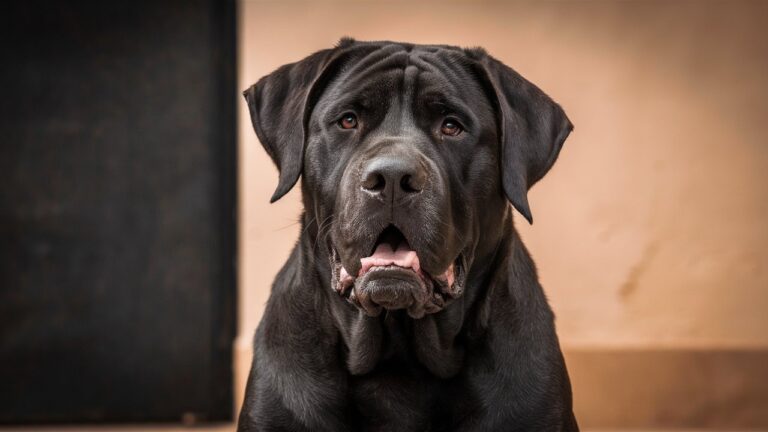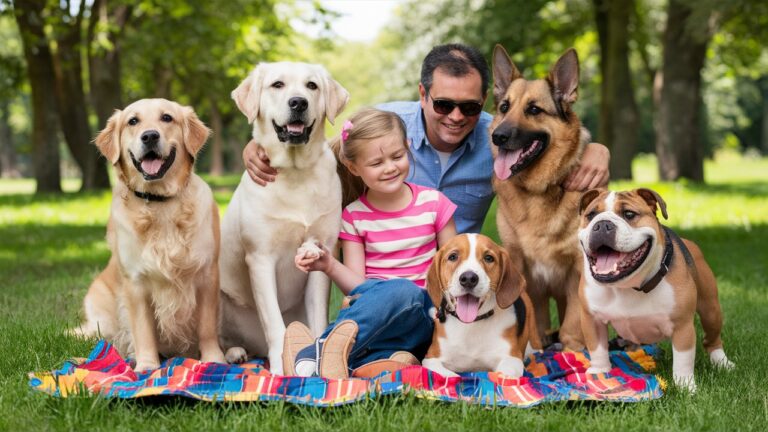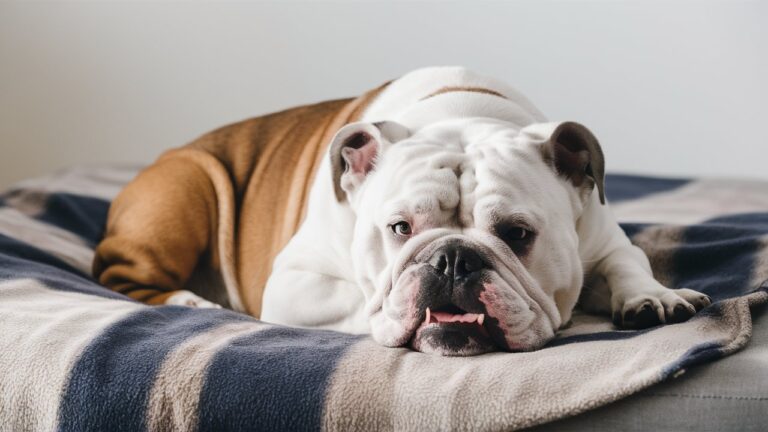The Siberian Husky: 100% Comprehensive Guide
The Siberian Husky, with its striking looks and captivating eyes, has long captured the hearts of dog lovers around the world. This breed is not just about aesthetics; it’s a bundle of energy, intelligence, and history. In this article, we will explore everything about the Siberian Husky, from its origins to care requirements, and include some personal anecdotes to make the content relatable and engaging.
Table of Contents
- Introduction
- History and Origins
- Ancient Roots
- The Chukchi People
- The Alaskan Gold Rush
- Physical Characteristics
- Size and Weight
- Coat and Colors
- Eyes and Ears
- Personality and Temperament
- Intelligence and Independence
- Social Nature
- Common Behaviors
- Training and Exercise Needs
- Importance of Early Training
- Effective Training Techniques
- Exercise Requirements
- Health and Nutrition
- Common Health Issues
- Dietary Needs
- Preventative Care
- Living with a Siberian Husky
- Home Environment
- Social Interaction
- Stories from Husky Owners
- Siberian Husky in Popular Culture
- Conclusion
Introduction
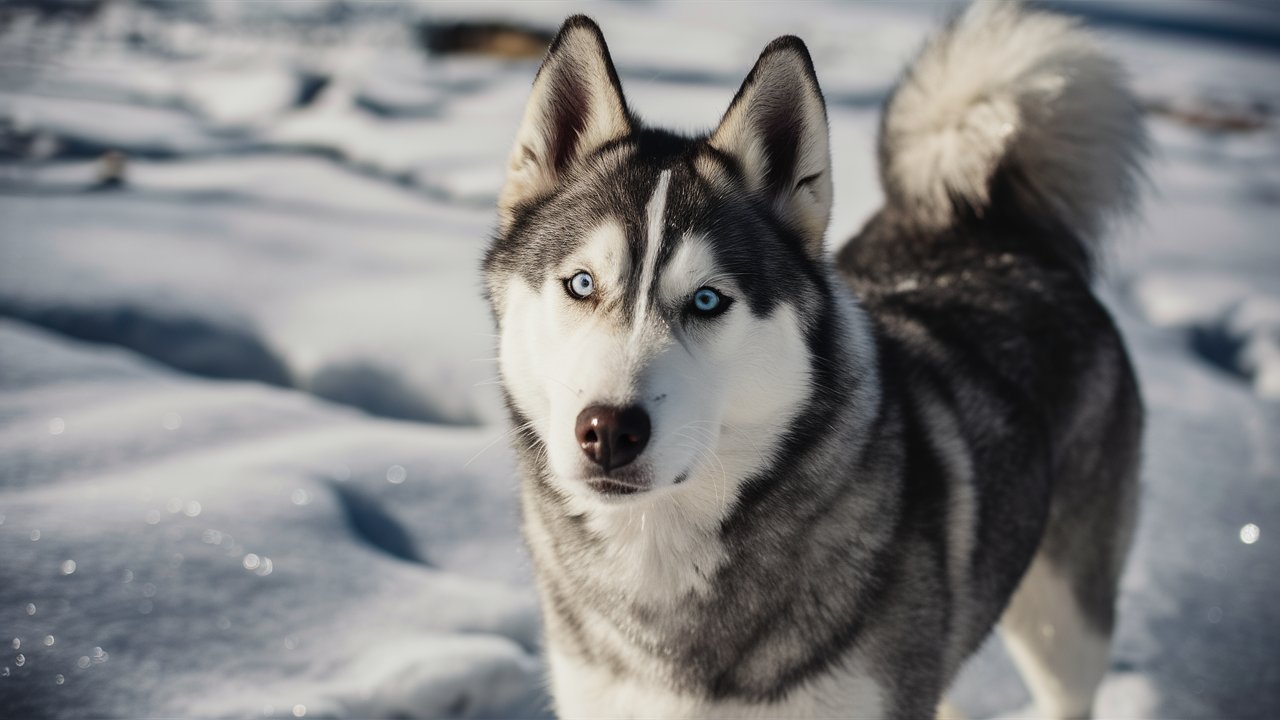
Siberian Huskies are among the most beloved dog breeds, known for their wolf-like appearance and vibrant personalities. These dogs are more than just a pretty face; they are full of energy, intelligence, and a sense of adventure. Having owned a Siberian Husky myself, I can attest to their unique charm and the joy they bring to a household.
Siberian Husky History and Origins
Ancient Roots
The Siberian Husky’s origins can be traced back to the cold, harsh climates of Siberia. These dogs were initially bred by the Chukchi people, a nomadic tribe in northeastern Asia. Their primary function was to pull sleds over long distances, a testament to their endurance and strength.
The Chukchi People
The Chukchi people developed the breed to assist in their nomadic lifestyle. The dogs were integral to survival, helping to transport goods and people across vast icy landscapes. They were bred for their endurance, ability to work in freezing temperatures, and friendly demeanor, which made them excellent companions as well as working dogs.
The Alaskan Gold Rush
The Siberian Husky gained international fame during the Alaskan Gold Rush in the early 20th century. They were brought to North America to participate in sled dog races, most notably the All-Alaska Sweepstakes. Their speed, agility, and endurance quickly made them favorites, and they played a crucial role in delivering mail and supplies across the snowy wilderness.
Siberian Husky Physical Characteristics
Size and Weight
Siberian Huskies are medium-sized dogs, with males typically standing between 21 and 23.5 inches at the shoulder and females between 20 and 22 inches. Males usually weigh between 45 and 60 pounds, while females are slightly lighter, weighing between 35 and 50 pounds.
Coat and Colors
One of the most striking features of the Siberian Husky is its thick, double coat. This coat helps to insulate the dog against extreme cold. The outer coat is straight and somewhat smooth, while the undercoat is dense and soft. Huskies come in a variety of colors, including black, gray, white, red, and sable. Their coats often feature striking patterns and markings, including masks and capes.
Eyes and Ears
The eyes of a Siberian Husky are another notable feature. They can be brown, blue, or even one of each (heterochromia). Their almond-shaped eyes give them an alert and keen expression. The ears are triangular, erect, and set high on the head, contributing to their wolf-like appearance.
Siberian Husky Personality and Temperament
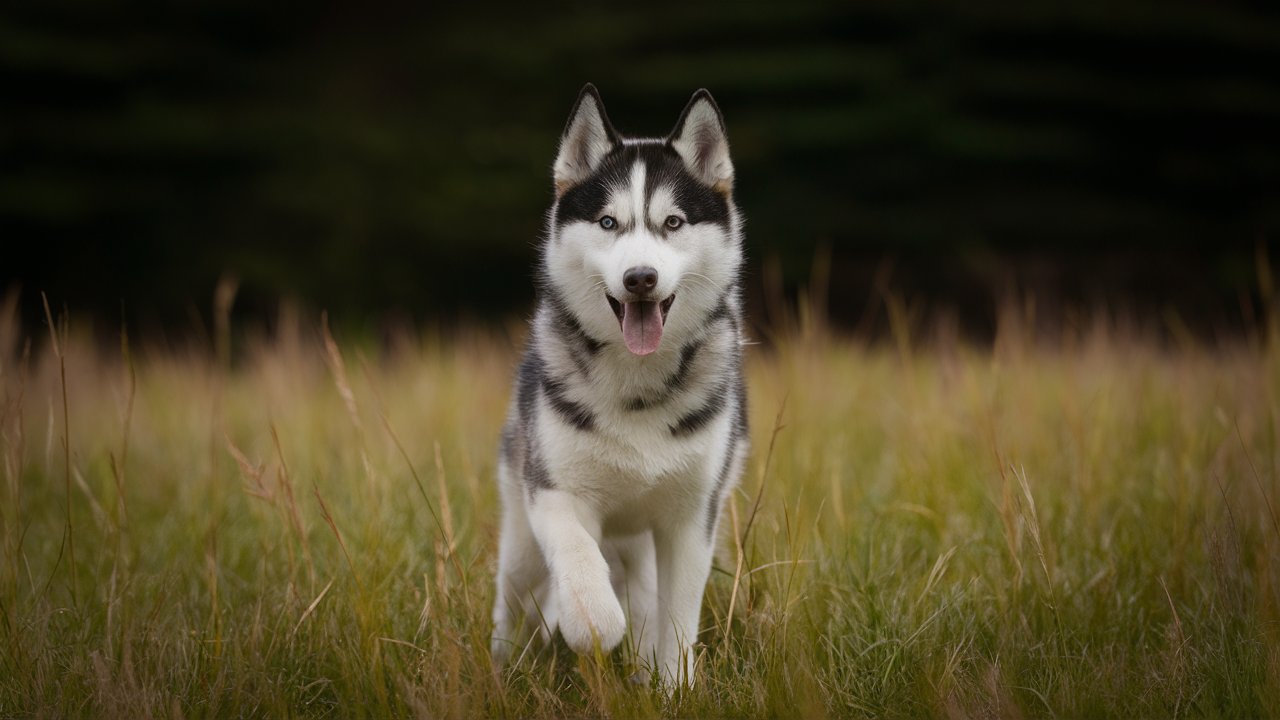
Intelligence and Independence
Siberian Huskies are known for their intelligence and independent nature. This independence can sometimes be mistaken for stubbornness, but it is a trait that served them well in their working history. They are problem solvers and can often find ways to get what they want, whether it’s opening doors or finding a weak spot in the fence.
Social Nature
Despite their independence, Huskies are very social animals. They thrive on interaction with people and other dogs. They are pack animals and do best in environments where they are not left alone for long periods. This social nature makes them great family pets, as they get along well with children and other animals.
Common Behaviors
Huskies are known for their vocalizations, which can range from howls to a unique talking-like sound. They are not typically barkers but will howl to communicate. They also have a strong prey drive, which can be a challenge for owners with small pets. Digging is another common behavior, rooted in their instinct to create cool spaces to lie in during warmer weather.
Siberian Husky Training and Exercise Needs
Training and exercising a Siberian Husky is essential to ensure they remain healthy, well-behaved, and happy. Due to their high energy levels and independent nature, Huskies require a structured training regimen and ample opportunities for physical activity. Let’s delve deeper into the importance of early training, effective training techniques, and the specific exercise needs of this dynamic breed.
Importance of Early Training
Training a Siberian Husky from a young age is crucial. Puppies are more receptive to learning new commands and adapting to their environment. Early training helps establish boundaries, teaches good behavior, and strengthens the bond between the dog and the owner. It also aids in socialization, ensuring the puppy becomes comfortable around people, other dogs, and various environments.
Socialization: Exposing your Husky puppy to different people, places, sounds, and experiences from a young age is vital. This exposure helps prevent fearfulness and aggression later in life. Puppy classes, playdates with other dogs, and trips to busy places can all contribute to a well-socialized Husky.
Basic Commands: Teaching basic commands such as “sit,” “stay,” “come,” “down,” and “leave it” should start as early as possible. These commands are the foundation of good behavior and essential for the dog’s safety.
House Training: Consistency is key in house training a Husky. Establish a regular routine for bathroom breaks and reward your puppy for eliminating outside. Crate training can also be an effective method to house train and provide a safe space for your puppy.
Effective Training Techniques
Siberian Huskies are intelligent but can be independent and stubborn. Using effective training techniques tailored to their unique temperament is important for success.
Positive Reinforcement: Positive reinforcement involves rewarding desired behaviors with treats, praise, or play. This method is highly effective for Huskies, who respond well to rewards. For example, when teaching the “sit” command, reward your Husky immediately when they sit on command. This reinforcement helps them associate the action with a positive outcome.
Consistency: Consistency is crucial in training a Husky. Use the same commands and rewards each time, and ensure all family members follow the same training protocols. Inconsistency can confuse the dog and slow down the training process.
Short Training Sessions: Huskies have short attention spans, so keep training sessions brief and engaging. Aim for 10-15 minute sessions multiple times a day rather than long, drawn-out training periods. This approach keeps your Husky focused and interested.
Patience and Persistence: Training a Husky requires patience and persistence. They may not always respond immediately or may test boundaries. Stay calm, be patient, and continue to reinforce good behavior consistently.
Interactive Toys and Puzzles: Incorporating interactive toys and puzzles into training can help stimulate your Husky’s mind and make learning fun. Toys that dispense treats or require problem-solving can keep them engaged and mentally active.
Exercise Requirements
Siberian Huskies are high-energy dogs with a strong need for regular exercise. Without sufficient physical activity, they can become bored, frustrated, and even destructive. Meeting their exercise needs is essential for their overall well-being.
Daily Walks and Runs: Huskies need at least 1 to 2 hours of exercise daily. This can include walks, runs, or a combination of both. They are excellent jogging partners and can keep up with a brisk pace for long distances.
Playtime: In addition to walks and runs, Huskies enjoy playtime. Games like fetch, tug-of-war, and frisbee can provide both physical exercise and mental stimulation. Playing in a secure, fenced area allows them to run freely and burn off excess energy.
Dog Parks: Visiting dog parks can be a great way for your Husky to socialize and exercise. They can interact with other dogs, run off-leash, and engage in playful activities. However, ensure the park is secure, as Huskies are known for their escape artist tendencies.
Agility Training: Huskies excel in agility training due to their athleticism and intelligence. Agility courses challenge them both physically and mentally, making it a fun and effective form of exercise. Participating in agility competitions can also be a rewarding experience for both the dog and the owner.
Sledding and Skijoring: Embracing their heritage, many Husky owners involve their dogs in sledding or skijoring (a sport where a person on skis is pulled by a dog). These activities provide an excellent outlet for their energy and allow them to use their natural pulling instincts.
Hiking: Huskies are great hiking companions and enjoy exploring new trails and environments. Hiking provides both physical exercise and mental stimulation, as they encounter different scents and sights. Ensure your Husky is well-trained on a leash or has excellent recall if hiking off-leash.
Mental Stimulation: Mental exercise is just as important as physical exercise for Huskies. Engage their minds with puzzle toys, obedience training, and interactive games. Teaching them new tricks or commands can also keep their minds sharp and prevent boredom.
Siberian Husky Personal Anecdotes on Training and Exercise
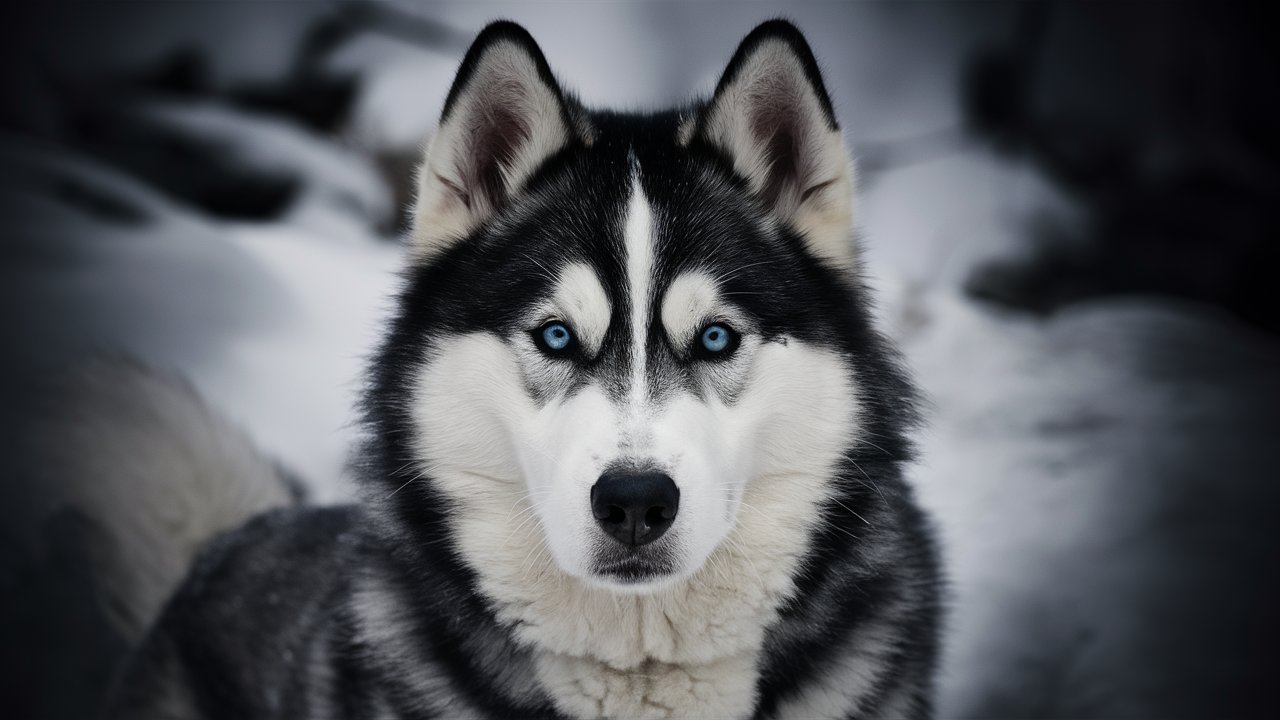
Training and exercising my Husky, Luna, has been an adventure filled with learning and growth. One of the most rewarding experiences was teaching her to run alongside me during my morning jogs. Initially, Luna was easily distracted, pulling in different directions and stopping abruptly. With patience and consistent training, she learned to stay by my side, matching my pace. Now, our morning runs are a highlight of the day, providing exercise for both of us and strengthening our bond.
Another memorable moment was introducing Luna to agility training. Watching her navigate the obstacles with enthusiasm and precision was a proud moment. It not only provided her with a challenging workout but also showcased her intelligence and agility. Agility training has become a fun and engaging activity that we both look forward to.
Luna’s natural curiosity and intelligence often lead to amusing situations. I remember the time she figured out how to open the back gate by observing the latch mechanism. Her determination and problem-solving skills were impressive, though it meant reinforcing our gate to keep her safe. These experiences highlight the importance of secure environments and constant vigilance with a clever Husky.
Health and Nutrition
Proper health care and nutrition are essential for maintaining the well-being of a Siberian Husky. This breed, known for its endurance and athleticism, has specific needs that must be met to ensure a long, healthy life. In this section, we’ll explore common health issues, dietary needs, and preventative care strategies for Siberian Huskies.
Common Health Issues
Siberian Huskies are generally a healthy breed, but they can be prone to certain genetic and health conditions. Being aware of these potential issues allows owners to take preventative measures and seek early treatment when necessary.
1. Hip Dysplasia: Hip dysplasia is a genetic condition where the hip joint does not fit properly into the hip socket, leading to pain and arthritis. While not as common in Huskies as in some other breeds, it can still occur. Maintaining a healthy weight and providing joint supplements can help manage this condition.
2. Eye Disorders: Huskies are prone to several eye conditions, including cataracts, progressive retinal atrophy (PRA), and corneal dystrophy. Regular eye check-ups with a veterinarian can help detect and manage these issues early on.
- Cataracts: A condition where the lens of the eye becomes cloudy, leading to impaired vision. Surgery can often correct cataracts.
- Progressive Retinal Atrophy (PRA): A degenerative disease affecting the retina, leading to blindness. There is currently no cure, but early diagnosis can help in managing the condition.
- Corneal Dystrophy: A hereditary disorder affecting the cornea, which can cause cloudiness and vision impairment. Treatment varies depending on the severity of the condition.
3. Hypothyroidism: Hypothyroidism is a condition where the thyroid gland does not produce enough thyroid hormones, leading to symptoms such as lethargy, weight gain, and skin issues. This condition can be managed with daily medication prescribed by a veterinarian.
4. Zinc Deficiency: Siberian Huskies are known to be susceptible to zinc deficiency, which can cause skin lesions and poor coat health. Zinc supplements or zinc-rich diets can help manage this condition.
5. Autoimmune Disorders: Huskies can be prone to autoimmune disorders, where the immune system attacks the body’s own cells. This can manifest in various ways, such as skin disorders or more severe systemic issues. Early detection and treatment are crucial.
Dietary Needs
A balanced diet is vital for the health and vitality of a Siberian Husky. Their nutritional needs are influenced by their high energy levels, unique metabolism, and predisposition to certain health conditions.
1. Protein: Siberian Huskies require a diet rich in high-quality protein to support their muscular build and energy levels. Protein sources should include lean meats like chicken, beef, fish, and lamb. Puppies and active adults may require higher protein intake to support growth and energy expenditure.
2. Fat: Healthy fats are an essential component of a Husky’s diet, providing a concentrated source of energy. Omega-3 and Omega-6 fatty acids are beneficial for maintaining a healthy coat and skin, as well as supporting brain and joint health. Sources of healthy fats include fish oil, flaxseed oil, and animal fats from meats.
3. Carbohydrates: While Huskies do not require a high carbohydrate diet, complex carbohydrates such as sweet potatoes, brown rice, and oats can provide necessary energy and fiber. These should be balanced with adequate protein and fat to meet their energy needs without leading to weight gain.
4. Vitamins and Minerals: A diet rich in vitamins and minerals is crucial for overall health. Key nutrients include:
- Zinc: Important for skin and coat health. Zinc-rich foods or supplements may be necessary.
- Calcium and Phosphorus: Essential for bone health, especially in growing puppies.
- Vitamin E and C: Antioxidants that support the immune system.
5. Hydration: Adequate hydration is essential for a Husky’s health. Always provide fresh, clean water, and consider increasing water intake during hot weather or after intense exercise.
Feeding Guidelines
The amount of food a Husky needs can vary based on age, activity level, and metabolism. It’s important to adjust feeding amounts to maintain a healthy weight.
- Puppies: Feed high-quality puppy food formulated for medium to large breeds, divided into 3-4 meals per day. Puppies have higher energy needs and should receive food that supports growth and development.
- Adults: Adult Huskies should be fed twice a day, with portion sizes adjusted according to their activity level. Active Huskies may require more calories to sustain their energy levels.
- Seniors: Older Huskies may need fewer calories and a diet lower in fat to prevent weight gain. Senior dog food formulations can help meet their changing nutritional needs.
Preventative Care For Siberian Husky
Preventative care is key to ensuring a long and healthy life for your Siberian Husky. Regular veterinary check-ups, a balanced diet, exercise, and attentive grooming all play a role in maintaining their well-being.
1. Regular Vet Check-Ups: Annual or bi-annual veterinary visits are essential for early detection and management of health issues. Regular check-ups should include vaccinations, dental exams, and screenings for common health conditions.
2. Vaccinations: Keeping vaccinations up-to-date is crucial to prevent diseases. Your veterinarian will recommend a vaccination schedule based on your Husky’s lifestyle and local regulations.
3. Flea, Tick, and Parasite Prevention: Regular use of flea, tick, and heartworm preventatives is important to protect your Husky from these common pests and the diseases they carry. Consult your veterinarian for the best preventative products for your area.
4. Dental Care: Dental hygiene is often overlooked but is critical for overall health. Regular brushing, dental chews, and professional cleanings help prevent periodontal disease, which can lead to more serious health issues.
5. Grooming: Huskies have a thick double coat that requires regular grooming to prevent matting and reduce shedding. Brushing several times a week helps remove loose fur and keeps the coat healthy. During shedding season, more frequent brushing is necessary. Regular grooming also provides an opportunity to check for skin issues or parasites.
6. Exercise: As mentioned earlier, adequate exercise is vital for a Husky’s physical and mental health. Regular physical activity helps prevent obesity, keeps joints and muscles strong, and provides mental stimulation.
7. Mental Stimulation: Mental stimulation is as important as physical exercise for a Husky. Interactive toys, training sessions, and engaging activities help keep their minds sharp and prevent boredom-related behaviors.
8. Weight Management: Maintaining a healthy weight is crucial to prevent health issues such as diabetes, heart disease, and joint problems. Monitor your Husky’s weight and adjust their diet and exercise routine as needed.
Siberian Husky Personal Anecdotes on Health and Nutrition

Owning a Siberian Husky means being proactive about their health and nutrition. My Husky, Luna, had an instance of zinc deficiency, which manifested as skin lesions around her mouth. After consulting with our veterinarian, we introduced a zinc supplement into her diet, and her condition improved significantly. This experience underscored the importance of understanding breed-specific health needs and working closely with a veterinarian to address any issues promptly.
Another memorable moment was adjusting Luna’s diet as she transitioned from puppyhood to adulthood. As a puppy, she had boundless energy and required frequent meals rich in protein and fat. As she grew, we adapted her diet to maintain her athletic physique and support her active lifestyle. Finding the right balance took some trial and error, but it reinforced the importance of personalized nutrition for each stage of a dog’s life.
Luna also experienced an eye issue when she was two years old. She developed a small cataract, which was detected during a routine veterinary check-up. Early detection allowed us to monitor the condition closely and take steps to manage it before it could significantly impact her vision. This experience highlighted the importance of regular veterinary visits and preventive care.
Siberian Husky Living with a Siberian Husky
Home Environment For Siberian Husky
Siberian Huskies do best in homes where they have plenty of space to roam. They are not well-suited to apartment living unless the owner is exceptionally diligent about providing sufficient exercise. A secure yard is important as Huskies are known escape artists.
Social Interaction For Siberian Husky
As mentioned earlier, Huskies are social animals. They enjoy being part of the family and participating in activities. Whether it’s a game of fetch, a long walk, or simply lounging around with their human pack, they thrive on interaction.
Stories from Husky Owners
Owning a Siberian Husky is a unique experience. I remember the first time I brought my Husky, Luna, home. Her boundless energy and curiosity were immediately apparent. One particularly memorable incident was when she figured out how to open the back gate. I was amazed at her problem-solving skills, but it also highlighted the importance of secure fencing. Luna’s playful nature and affectionate personality have brought so much joy to our family. She has a way of making us laugh with her antics, whether it’s “talking” to us when she wants something or the way she joyfully greets everyone she meets.
Siberian Husky in Popular Culture
Siberian Huskies have made their mark in popular culture, often portrayed in movies, books, and TV shows. They are frequently depicted as adventurous and heroic, which is not far from the truth. One famous example is Balto, a Siberian Husky who became a hero during a diphtheria outbreak in Alaska in 1925. Balto led his team through a treacherous journey to deliver lifesaving medicine, a story that was later immortalized in an animated film.
Conclusion
The Siberian Husky is a remarkable breed, full of energy, intelligence, and charm. They require a dedicated owner who can meet their exercise needs and provide the social interaction they crave. In return, they offer loyalty, companionship, and endless entertainment. Whether you’re drawn to their striking looks or their spirited personality, owning a Siberian Husky is a rewarding experience that brings joy and adventure into your life.



